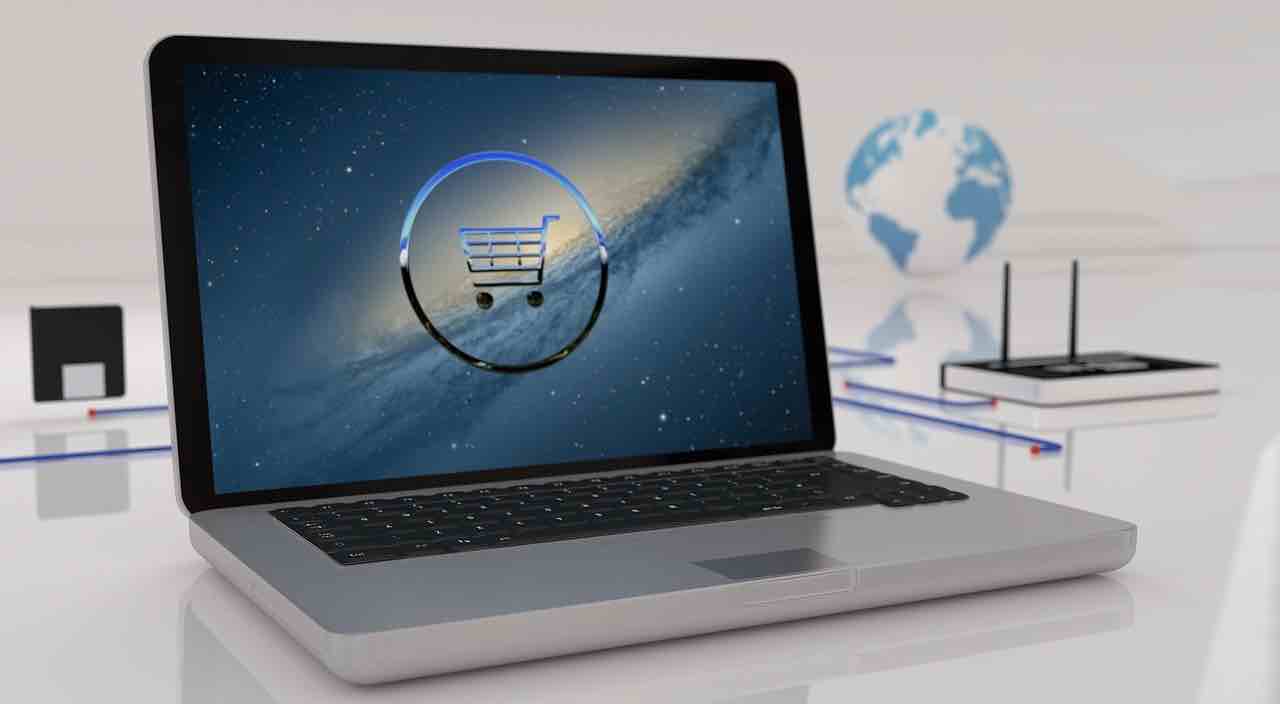It’s no longer a secret that the key to success in retail is presence on all fronts.
Whether you run an online store or a physical store, you know that presence at all levels is essential for communication, and therefore for the success of your business.
But most of today’s retailers tend to overlook one or the other.
It’s precisely to avoid this that phygital commerce is of particular interest.
If this neologism doesn’t ring a bell, that’s because it hasn’t been around very long.
But you’ll soon realize that it can become a major asset.
More and more brands, of all sizes, are introducing this type of system.
So, before going into a little more detail, I’d like to explain what phygital commerce is, and how it can quickly become an additional selling point for you. 
What is phygital commerce?
As you may have already guessed, the word “phygital” comes from the contraction of two other terms: physical and digital.
In simple terms, it’s a matter of linking the two sales interfaces – the face-to-face store and its website.
But the implementation of such a solution is far from being restricted to the creation of an online boutique.
More generally, it’s about offering customers a new, engaging shopping experience that adapts to their individual consumption habits.
In short, phygital commerce does not seek to replace an existing system, but rather to link two worlds that are eager to work together.
Why use phygital?
The concept may seem a little abstract at first.
That’s why I believe it’s essential to apply it to very concrete cases.
You’ll quickly understand the importance of this modern solution for your business and your customers.
Standardize your sales areas
Online retailing has taken off in leaps and bounds in recent years.
It has to be said that the Internet and the tools it provides have enabled many competitors to enter the digital world, sometimes to the detriment of physical stores.
This trend is now easing, as more and more traditional retailers are moving online.
However, a boundary still exists between a store and its digital counterpart.
The two entities are often quite distinct.
This is counter-productive, as customers need to hold on to a single identity.
This is precisely the challenge of phygital commerce, which aims to unify the whole. 
Delivering a unique customer experience
Beyond the purely commercial issue, phygital commerce is also concerned with another side of the business: the customer experience.
Decades ago, customers came to a retailer out of necessity.
There was no question of attracting them or making their lives easier, since they came to buy anyway.
Today, things have changed.
Faced with ever-increasing competition, it has become necessary to know how to stand out from the crowd and make the customer experience easy, fast and pleasant.
By linking up with a digital store, phygital commerce makes it possible to set up promotions, loyalty programs or personalized follow-up, even when the customer is physically present.
Simplify the management of your business
From a practical point of view, the installation of such a system is also advantageous for retailers.
Where, until now, the management of two separate sales areas required twice as much organization, the implementation of a phygital commerce system makes it possible to standardize overall management.
Whether it’s a question of tracking inventory, customer accounts or, more generally, accounting, it saves considerable time and energy.
How do you set up a phygital business?
Hopefully the concept of phygital commerce is now more concrete for you, the question now is how to implement it.
As you can see, this is an important step in the life of your business, and one that will require a number of changes.
However, this is not a complex conversion to digital, but rather an adaptation of what already exists.
Create your online store
The first step in this process is often the creation, or optimization, of your online store.
Even if you already have a digital space, it hasn’t necessarily been designed for phygital commerce.
The first step is to create a link between your store and your website.
Depending on the system you have in place, you may need to review some of the tools and software you use.
But never forget that the aim is to provide an enhanced customer experience, and consequently, increased sales. 
Adapting your sales space
Secondly, you’ll need to modernize your physical store.
This may mean installing digital terminals, for example.
These allow customers to search for a particular item and locate it, or to access their loyalty area or personalized promotions.
Or it could be a mobile application, where your customers can find everything they need to shop in your store.
Whichever solution you choose, this stage is generally the most complex, but also the key to phygital commerce.
Bridging the physical and digital divide
Finally, once you’ve prepared both spaces, all you need to do is establish the link between the two to validate your transition to phygital commerce.
Of course, the challenges, tools and needs depend on the nature and scale of your store.
Each solution needs to be adapted.
That’s why I believe it’s essential to build the project as a whole.
As an e-commerce professionalAs an e-commerce professional, I’m at your disposal to assess your expectations and draw up a personalized, effective roadmap.
Don’t hesitate to contact me to get started in phygital commerce.


